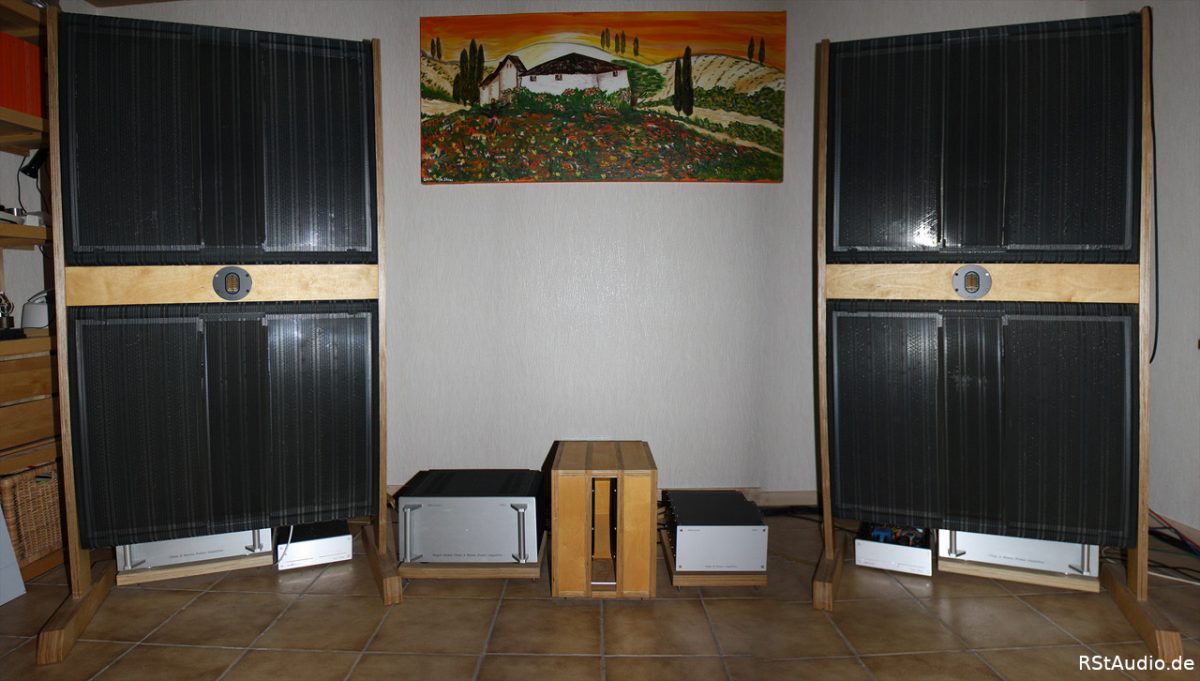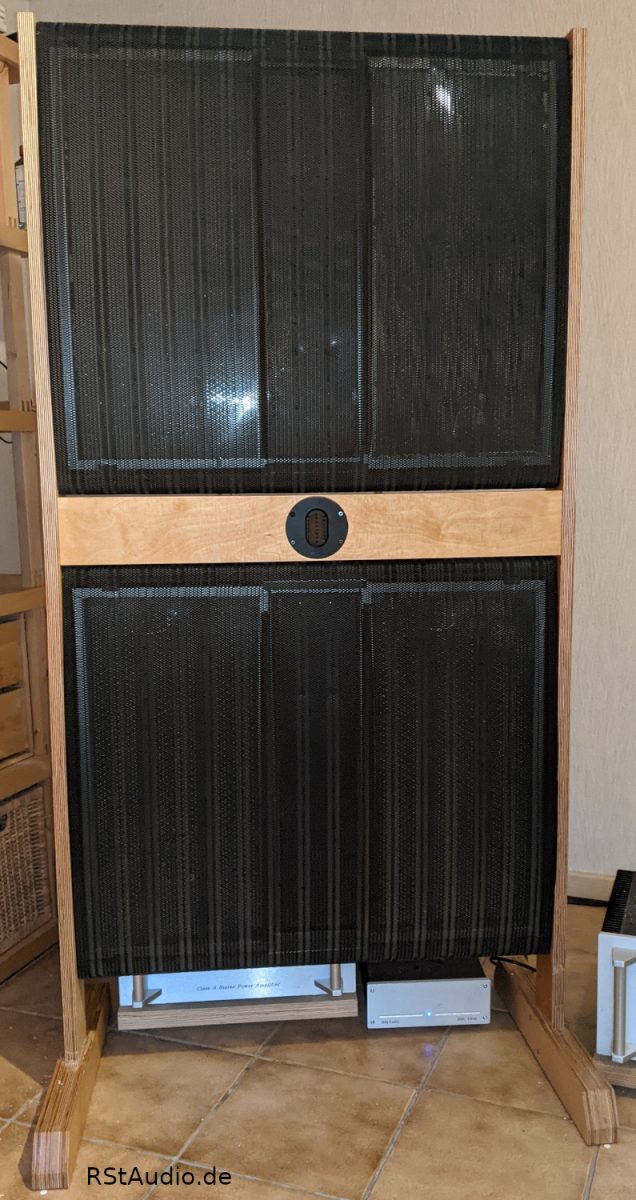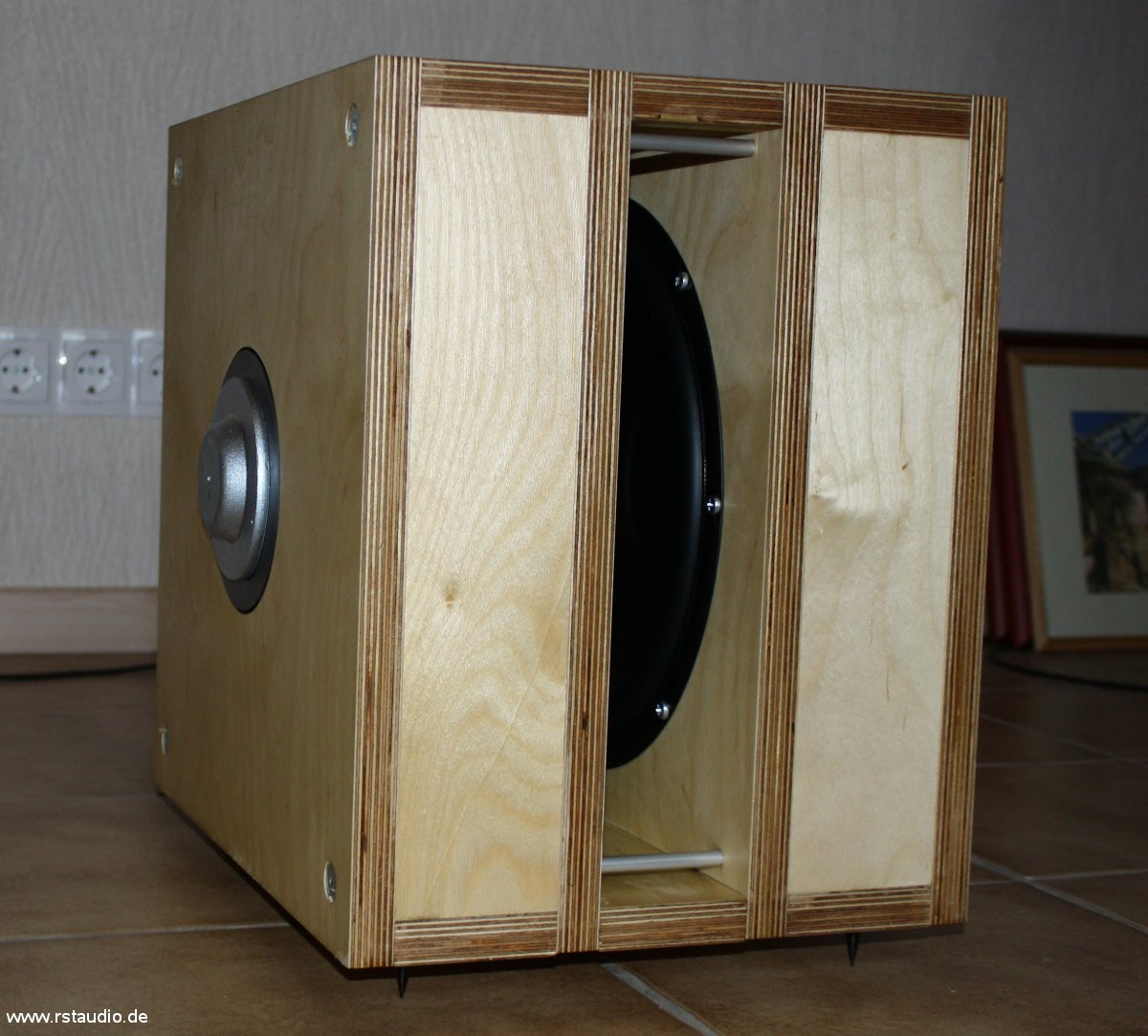
Table of Contents
Introduction
19 March 2022
In the early 1980s I had the pleasure of listening to Mark Levinson’s famous HQD system. This system was an active three-way system with loudspeaker components from Hartley, Quad and Decca. For each channel, two Quad ESL 57s, arranged one above the other in a stand, were used, which reproduced frequencies from 100Hz to 7kHz. The frequencies above 7kHz were transmitted by a Decca ribbon tweeter modified by ML (without horn) and placed between the Quads. Two 24″ Hartley subwoofer systems were responsible for the low frequencies. Other components of the system included the ML LNC-2 active mono crossovers and the ML-2 Class A power amplifiers.
This listening experience left a lasting impression on me, especially since I was already the owner of Stacked Quads at that time. When I started building the subwoofer in 2008, it was clear to me that I wanted to build my own implementation of the HQD system. The result is an RQM system with the following components:
- RiPol Subwoofer with a frequency range up to 125Hz
- Quad ESL 57 in a stacked configuration, frequency range 125Hz to 7.5kHz
- Mundorf AMT 1908C for frequencies above 7.5 kHz
Unlike the original system, I use a mono subwoofer, but it is more than sufficient for my small listening room.
The frequencies are split by the Lynx converter in conjunction with the Convolver PC, FIR filters are used. The Quads are driven by two ES4s (XA30.8 replicas) and the Mundorfs by an ES2 (Aleph J replica). The RiPol is powered by the ES3 as before.
Stacked Quads & Mundorf AMT
18 March 2022
With the original HQD system, the two Quads including the Decca ribbon can be rotated around the centre of the loudspeaker assembly – similar to an old school blackboard. In contrast to this, my RQM system has fixed stands, which has proven itself over the years (see Stacked Quads). The dimensions of the setup are such that the centre of the tweeter is 1m above the floor, which is pretty much the same height as my ears. The height of the baffle of the AMT is 110mm, just enough to mount this tweeter properly.
The frames are much more stable than the old ones. The whole structure can hardly be moved at the top – at the maximum lever. This not only gives you a good feeling, it is also clearly noticeable in terms of sound. The reproduction in the upper bass range has become even more precise, which speaks against the “school board” construction of the original HQD system. As a consequence, the stands will be supported against the rear wall with struts. This should remove any tendency to vibrate from the system. A solution that has been on my mind for a long time. The stands are already prepared for this.
The stands are handmade in the usual perfect way by my friend Jürgen.
Dear Jürgen, I would like to take this opportunity to thank you once again for this wonderful work!
This is a combination of a planar radiator with a point source driver. The crossover frequency is critical and must not be chosen too low. I have made tests with 5kHz and 6kHz, both crossover frequencies are unusable. Especially at 5kHz the different radiation behaviour is clearly audible.
From my tests it is clear that the Mark Levinson people have made a wise choice with 7kHz. From this crossover frequency on, the different behaviour fades into the background. The AMT “only” transmits the harmonics of all significant musical instruments and supports the Quad in this range. In the end, I decided on a slightly higher crossover frequency at 7.5kHz. With this, the drivers form a very good symbiosis.
RiPol
19 March 2022
All information about the RiPol’s construction can be found on my page about this truly exceptional subwoofer.
In the meantime, I operate the RiPol without the passive compensation circuit. The two 30cm drivers are thus directly connected to my Hypex power amplifier. A suppression of the resonance frequencies from approx. 250Hz is no longer necessary due to the use of the FIR filters (see below).
I experimented with the crossover frequency between the RiPol and the Quads many years ago and ended up with 125Hz. Since then, I no longer question the result and also use it with the FIR crossover.
Digital Signal Processing
11 June 2024
At this point, we can no longer speak of a simple crossover as in the HQD system. At the beginning of the 1980s, the possibilities described here did not exist.
The stereo signal is digitised and convolved with target functions using software (AcourateConvolver). The following changes are made to the input signals:
- 3 Way Crossover
- Time Alignment of the Speakers
- Room Acoustic Correction Filters
- Symmetrisation of the Phase between the Channels
The result is different output signals for the individual frequency ranges. The RQM system has a total of 8, with each of the four Quads being supplied with its own signal. The RiPol receives the bass information from both channels. There are also the two Mundorfs. After D/A conversion, these signals are fed to the corresponding output stages/speakers. The RQM system has a total of 7 hardware channels (1x RiPol, 4x Quads & 2x Mundorfs).
I use Acourate for all acoustic measurements and calculations. This software is a very powerful, but also extremely complex tool for digital signal processing. Unfortunately, the documentation leaves a lot to be desired, even though the Acourate Wiki is slowly improving. I find it almost impossible to familiarise myself with the software without outside help. Fortunately, I have my friend and mentor Heiner, who is always there to help and advise me on this complex path.
How to operate Acourate can be read here in detail. Further information can also be found on the following pages:
- Acourate-Wiki (partly in English)
- The Acourate User Group
- aktives-hoeren (only in German)
A detailed description of the optimization of the RQM system using digital signal processing can be found here.
Audiophile Review
13 April 2022
With all the actions described here, audio transmission in my listening room has once again taken a significant step forward. Since the refurbishment of the Quads in 2020, and especially with the switch to digital signal processing at the beginning of 2021, I have gone from one success to the next. I would never have thought it possible that I would one day be at this point. The new frames and the Mundorf AMT have once again provided significant improvements. I can only strongly recommend anyone using an active multi-way system to look into digital signal processing. I am sure that you will NEVER regret this step.

